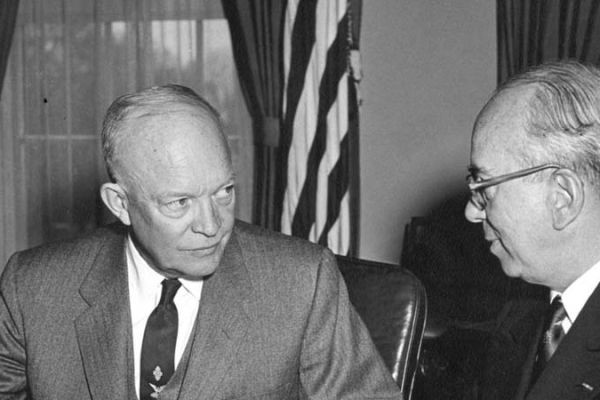Under Dwight Eisenhower's presidency (1953-1961), the United States enjoyed a period of stability and economic growth. Dwight Eisenhower's economic policies prioritized strengthening the economy, fostering opportunity, and promoting national prosperity. His administration focused on building infrastructure, such as the Interstate Highway System, which became a cornerstone of economic development. Additionally, he implemented measures to ensure fiscal responsibility while supporting programs that expanded access to education and housing.

Economic stability and growth of the middle class
One of the main goals of Eisenhower's policies was to strengthen the economy. He favoured cutting government spending, lowering taxes, and controlling inflation. Economic stability created the conditions for the growth of the middle class, which became the symbol of the American Dream.
Special attention was paid to access to housing. Mortgage support programmes helped millions of Americans to buy homes. This encouraged the development of suburbs that came to embody the ideals of independence and comfort. In addition, Eisenhower actively supported programmes to help World War II veterans.
Infrastructure development as a foundation for prosperity
One of the biggest achievements of the Eisenhower administration was the creation of the Interstate Highway System. This programme not only stimulated economic growth, but also created thousands of jobs, improved accessibility and connected different regions of the country.
Highway construction also facilitated trade, speeding up the delivery of goods and making it easier for people to get around. For the middle class, this meant being able to move easily to the suburbs, work in cities, and travel across the country. Motorways became a symbol of progress and innovation, making life more comfortable and promising.
Fighting communism and defending freedom as values
During the Cold War, Eisenhower saw the threat from communism as a challenge to American values of freedom and democracy. His foreign policy included developing a doctrine of ‘containment’ to prevent the spread of communism.
Eisenhower also focused on the development of science and technology, especially after the launch of the Soviet Sputnik 1 satellite. This was the impetus for the creation of educational programmes and investment in research. Support for education and innovation was in line with the ideals of the American Dream, encouraging the pursuit of knowledge and success. He understood that a strong and educated nation was the best defence of democratic principles.
Conclusion: Eisenhower's policies and their importance in shaping the American Dream
Dwight Eisenhower's policies were the foundation for the prosperity of the United States in the 1950s. His pursuit of economic stability, infrastructure development, support for the middle class, and protection of democracy helped to fulfil the ideals of the American Dream.
Eisenhower created an environment of growth and prosperity that allowed Americans to believe in their capabilities and strive for a better life. His efforts to develop infrastructure and support education left an indelible mark, forming the foundation for continued prosperity. Eisenhower's legacy proves that visionary policies can strengthen citizens' faith in their future, making the American Dream a reality.


